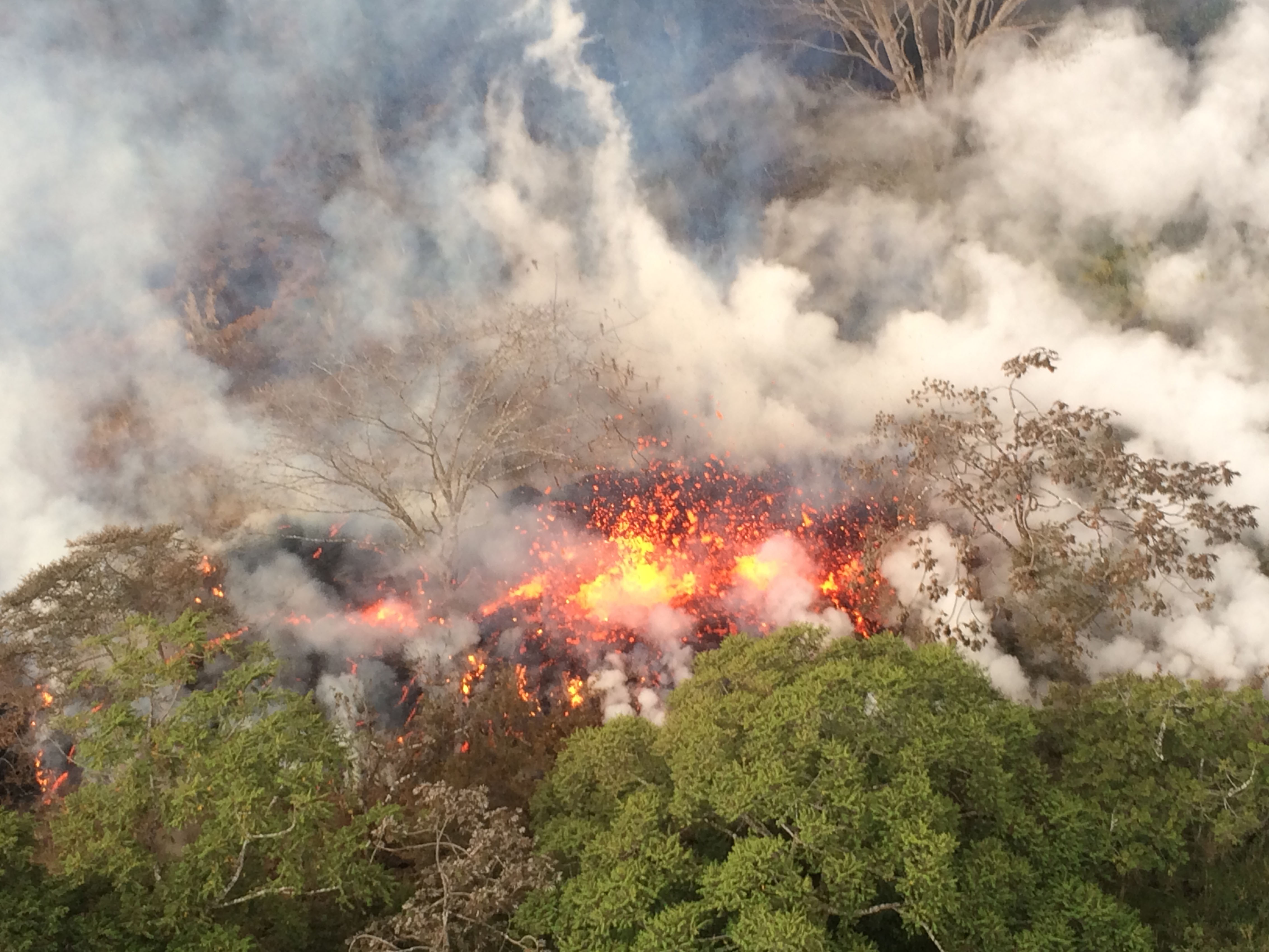Biggest eruption at Hawaii volcano since it became more active
Photo: () | ©AFP
Los Angeles (AFP) – Hawaii’s Kilauea volcano erupted from its summit early Thursday, shooting a huge plume of ash miles into the sky and prompting authorities to urge area residents to take cover.
The Hawaii Volcano Observatory said the explosion within Kilauea’s Halemaumau crater — the biggest since the volcano became more active on May 3 — had produced a volcanic cloud that reached as high as 30,000 feet (9,000 meters) and was drifting downwind to the northeast.
“Not your average wake-up call at the Kilauea Volcano summit,” the US Geological Survey said of the 4:17 am (local time) blast that lasted a few minutes.
The Observatory said residents living along the path of the ash plume should take shelter, and maintained a code red aviation alert signaled on Tuesday, meaning no air traffic was permitted in the area.
“At any time, activity may again become more explosive, increasing the intensity of ash production and producing ballistic projectiles near the vent,” it said in a statement.
Authorities by afternoon said weak winds and rain meant that ash fallout from the latest eruption was largely contained in areas around the Kilauea summit.
“We’ve had reports of light ash fall in Hawaii’s Volcanoes National Park and we expect that folks may be experiencing trace ash fall around Volcano Village,” Michelle Coombs, a volcanologist at the US Geological Survey, told reporters at a daily briefing.
“We expect activity could wax and wane like this in the near future,” she added.
Kilauea is one of the most active volcanoes in the world and one of five on Hawaii’s Big Island.
It started erupting on May 3, prompting about 2,000 people to flee from their mountainside homes.
The latest steam-driven burst on Thursday came two days after Halemaumau crater sent “ballistic blocks” of rock and another massive plume of volcanic ash shooting into the sky.
Kevin Kushel, a resident of the island, told AFP that Thursday’s plume of smoke could be seen miles away.
“I just went to Pahoa and it’s a smoke-filled nightmare, the likes of which I’ve only imagined from reading about Pompeii,” he said.
– Precursor to major eruption –
Scientists believe the volcanic activity may be a precursor to a major eruption similar to the one that shook the island in the mid 1920s.
But they say they expect no loss of life given that the most exposed residential areas have been evacuated and the region where the volcano is located — on the southeastern part of the island — is not densely populated.
Geologists say the latest eruptions are being caused by lava levels substantially draining at the summit.
“The magma is something like 300 or 400 meters below the surface, and when that happens, ground water can get that close to the volcano where the magma is and it can heat up steam… and issue out of the ground explosively,” Ken Rubin, who heads the department of geology and geophysics at the University of Hawaii at Manoa, told AFP.
He added that earthquakes caused by the movement of magma usually take place before such eruptions, as has been the case at Kilauea.
“The last time the volcano near the summit was in the same condition as now was in 1924 and in that year, we had about a two-week period of large explosive eruptions out of the summit,” he said.
So far, about 40 homes and other buildings have been destroyed by the red-hot lava that has been flowing from the volcano since early this month.
Authorities have warned residents to stay away from the neighborhoods evacuated, warning that toxic sulfur dioxide seeping out of nearly two dozen fissures — cracks in the ground — caused by the volcano could prove deadly.
“Severe conditions may exist such as choking and inability to breathe,” the county’s civil defense agency said earlier this week. “This is a serious situation that affects the entire exposed population.”
Disclaimer: This story has not been edited by Siliconeer and is published from a syndicated feed. Siliconeer does not assume any liability for the above story. Validity of the above story is for 7 Days from original date of publishing. Content copyright AFP.


